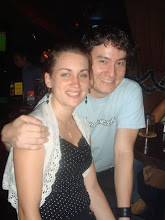On the 30th of October, we made our way across the Baltic sea to Finland. This was our final international trip while we live in Sweden and our first one by sea.
A cheap alternative to short-haul plane travel is to go by sea. Catching the cruise ship (or ferry) from Stockholm to Helsinki is an experience in itself. Several ferry lines operate across the Baltic sea. We caught the Mariella, which is a ship in the Viking Line.
Scandinavian ferry cruises across the Baltic are renowned for their "booze cruises". It seems that Swedes and Finns come out of their shells when they get onboard and literally drink themselves to death on these cruises. This is because alcohol is duty-free onboard due to the fact that it's an international cruise. Although our trip had its fair share of drunk Finnish medical students on our level, it was otherwise not that bad. The real drinking cruises happen on actual overnight "booze cruises" from Stockholm to Åland and back.
My cabin: the fake window rubbed in the fact we were in the lowest class.
I was sharing a room with Maxim, the quirky Ukranian. Here he is with Candice at the bar.
After a long journey, we finally arrived in foggy, wet, cold Helsinki.
We were met by Richard Brewis, an old family friend who I (Nat) had known back in Sabah. The Brewises were linguists who were responsible for the world's first complete Murut-language dictionary.
Candice and Richard
We were blessed enough to stay in a hotel this trip. Candice was so excited she had to be in the picture.
Upon arrival we embarked on the "Richard Tour of Helsinki". Richard took us round to see many of the city's landmarks on the reliable tram-network around central Helsinki.
Finland was conquered by Russia in the early 1800s and only gained independence in 1918 after a bloody war. Unlike it's southern Baltic cousins (Estonia, Latvia, Lithuania), Finland stood up to the USSR and resisted expanding Soviet influence, turning towards Western Europe and its former colonial master, Sweden.

Richard and I in one of Helsinki's market squares
Walking around the streets of Helsinki, we realised that it was a much more recent city than Stockholm with an abundance of neo-classical and art-deco influence in its architecture.
Richard took us to Helskinki Olympic Stadium where we tried some traditional Finnish quisine - herring with sausage and pork soup!


At the cafeteria of Helsinki Olympic Stadium
Helsinki played host to the Summer Olympics in 1952, something which the city is still proud of today. An amazing view of the city can be seen from the stadium tower but unfortunately it was closed when we arrived.


Helsinki Olympic Stadium
The first photo above is us beside the statue of Paavo Nurmi, arguably the greatest track and field athlete of all-time (yes I looked him up). He won 12 olympic medals (second only to Michael Phelps) and broke 22 world records and probably would have won more had he been allowed to compete at the 1932 summer olympics.
Founded by the King of Sweden in 1550, today Helsinki is a bustling city of just over a million inhabitants. It seems to have a character of its own, unlike Scandinavia but also far from Russian. Perhaps it's the language, or the fact that Finnish people generally keep to themselves (hence the stereotype of the "silent Finn") and avoid small talk.

A busy Helsinki street


The Rock Church


The National Parliament Building

Me, Richard, Johanna and Kielo


Helsinki Cathedral

The reliable Helsinki trams

Our friends from back in Uppsala - Lauri and Vincent just happened to be in Helsinki the same weekend


On the Gabriella, drinking Becks
We awoke the next morning to see ourselves calmly cruise into Stockholm.





































































